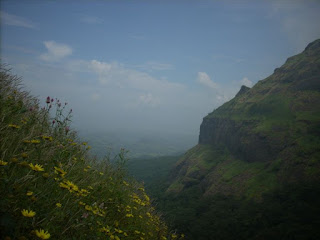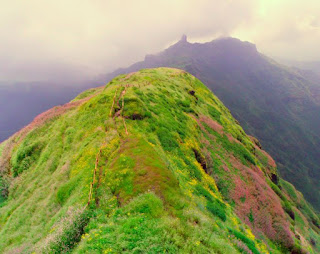NOTE: The side effects I'll be highlighting are exclusive of the miniscule bank balance that photographers usually have.
I started photography in May 2007, when I received my 1st camera: Sony Ericsson W810i Camera phone featuring a solid 2 MP camera. Before that, I used to lot of extra-curricular activities like trekking, going outdoors for camps, trails; reading fantasies, fiction etc; playing mandolin, listening/searching for new genres of music; playing volleyball, watching good movies, spending time with my friends and spending special time with special friends. And of course, the day before the exams used to be spent studying. SLowly slowly, things started changing as I got more hooked on to photography. It began with liking the photos, then searching for better cameras, finding shops, finding better shops, reading reviews, reading about the photographers, watching photographs, learning photoshops, participating in the forums, asking queries, answering queries, teaching photography to a few, getting paid :) and lastly taking photos, segregating them, editing the good ones, posting them on the web, receiving C n C. And finally writing about the entire experience. I'm not talking about the blog alone. I'm on my 7th notebook (dedicated to photography) at present!
Well, since a few days, I've become increasingly conscious that I am spending way too much time on photography than what is needed to create good looking pictures. This realization is especially bitter coz at present I don't own a camera!!! I use a friend's Olympus 570uz and a superb Nikon L10 (donated by a friend). All of a sudden I realized what I was missing..Since then, I've been trying to make up for the loss. I've decided to trek the Sahyadri in such a way that would give maximum output. So I've started trekking with a few friends. Visited Kaas Plateau, Purander, Torna aand Harishchandragad. I try to document as much of the nature as I can. I've gotten hold of really handy instruments like GPS, water quality test kit, clinometer campass to document the geology and hydrogeology of the area (I'm not that good at this, but kaam ho jata hai). Then I try to observe and document the odonates and the butterflies, birds, wildflowers, the trees and also the socio-economic and cultural scence. This way, I make maximum use of time, place and myself! I hope someday I can put these treks together into a series of papers or something of that sort.
As I decided to review my old hobbies, I started by reading Congo and and later on, His Dark Material trilogy. Both are fantastic. While Congo is full of suspense, I have to admit that it didn't surprise me. I kind of expected shocks at every page, if not at every line. After all, it is a Michael Chrichton book. It does shock you ( It has to!). But what sets him apart from others is the way he reason things, people, situations and of course the concepts. A true genius. I plan to write exclusively about him some other time, so this will do for now. The other one I read, His Dark Materials, is a trilogy consisting of Northern Lights, The Subtle Knife and The Amber Spyglass. Again, a work of a genius. I would have ridiculed even God if he had said I would like a fantasy tale more than LOTR. But well, His Dark Materials, I find, is better (This is debatable, UMMV-Ur milage mey vary). It is fast, interesting and keeps you focussed. THe best part I liked about the trilogy is, again, the way it has been written. Pullman is a master at describing feelings. Especially of the little ones (Harry Potter, suddenly, seems so grown up! even in the 1st book!!). You feel so much involved with the characters. YOu actually start believing in them. Though it is a fantasy and has plenty of adventures, it has a love story which I loved the most. You will cry buckets before you keep this book back to the shelf. This is possible only if that child inside you is still alive. Else you'll find this, like everything else around you, childish. Oh one more thing: These books (HDM) are out and out against christanity. THe God is a villain here. Strangly, it is said the story was inspired by Milton's Paradise Lost. The Title has been taken from the same.
Now, there is apile of books to be read on my desk. On top lies The Hitchhiker's Guide to the galaxy. I've seen and like the movie. The book, however, can wait. I've dug out the Man Eaters of Kumaon. I don't remember how many times I've read it. Every time is a new experience. Just finished reading the story of Robin, Corbett's dog. I shall write more about the book later on.
One weekend was spent on Tarantino movies. Reservior dogs, Pulp Fiction and Kill Bill 1 and 2. Of course I had seen them before. But to get the feel (and to pass the time), I decided to watch them at a stretch. I'll write more about movies later.
I've decided to take music seriously. Till now, I've been trying hard to learn mandolin on my own. I play considerably well too. But I struggle with just too many things. finding rhythem, tuning (GDAE for western and p'sa'p'sa' for Indian..How I wish to play all genres with GDAE!), notes (its all guesswork here!), left hand technique (This is the left handed equivalent of the Right hand technique), tremolo, crosspicking, trying to listen to Bluegrass (even dreaming of playing it is difficult!) etc etc etc.. Now I've decided to stop this Eklayvagiri. A friend just gave me a contact of some mandolin teacher. Hopefully, he'll guide me from here on..
Apart from all these activities, I increased my social attendance. I'v met interesting people. Rightly guessed the sun signs of a few (they always get freaked out, don't they?). Such solutions, by default came with less time being spent on photography. In fact there were days when I didn't even think of camera!
Bottomline: While trying to get out of an addiction, don't give a damn to that addiction. Instead, give more importance/prominance to the alternatives. They, surely are equally interesting. And addictive.
 The Foreground shot
The Foreground shot 




